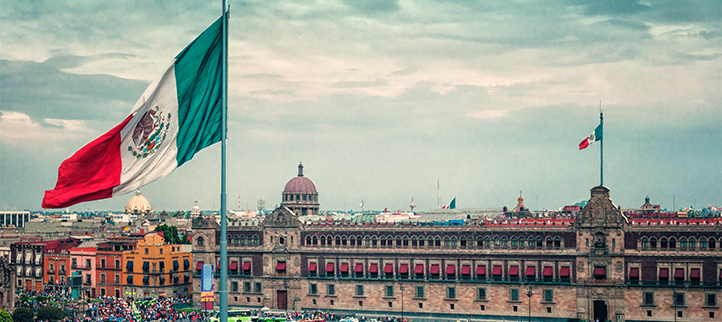A Decade of Change for Mexico’s Gasoline and Diesel Markets
Mexico has been the setting for one of the biggest energy stories of the past decade.
In 2013, president Enrique Peña Nieto backed reform to bring private investment into the energy sector to fulfill Mexico’s growing gasoline and diesel needs as well as compete with and complement state-owned companies Pemex and electricity provider CFE.
That move broke over 80 years of state monopoly and attracted up to $200 billion in potential investments across upstream, downstream power and natural gas markets.
There have been – and remain – hurdles to jump as the market opens. For example: Since 1990, Mexico’s fuel demand has doubled to over 1.4 million b/d without a significant expansion in storage facilities. Pemex alone cannot fund a storage construction spree, with a debt load that tops the world’s refining sector.
Meanwhile, new president Andres Manuel Lopez Obrador, or AMLO, has ushered in an ethos of energy autonomy to Mexico, with Pemex at the forefront of strategies.
In the latest episode of the OPIS Crash Course podcast, OPIS editors Daniel Rodriguez and Justin Schneewind talked to us about the gasoline and diesel market landscape in Mexico and the opportunities and challenges that have opened due to reform.
Listen to the podcast right now:
How Have Gasoline and Diesel Imports Been Flowing into Mexico?
There’s been an evolution in how outside companies have targeted fuel supply into Mexico.
Private imports have seen movements from the United States into Mexico from pipelines and trucks in the northern part of the country to increasing levels of rail shipments heading deeper into the country.
There are now discussions about bringing in waterborne barges of fuel to satisfy demand in Mexico in the next year or two.
Each of the first large private fuel shipments have used a different method to import gas and diesel.
For example, ExxonMobil and Marathon Petroleum have expanded across the country with promise of guaranteed supply with an independent logistics system.
Other companies like BP, Total and Shell have established retail networks supplied by state-owned Pemex, allowing them to expand across Mexico and anchor new infrastructure.
And as these strategies evolve, changes in market share are being noted in Mexico.
- Earlier this summer, a third of Mexican retail gas stations had a non-Pemex brand.
- Private companies are importing 14% of the total demand for gasoline and diesel in Mexico, according to government data.
- Since the energy reform, Pemex terminal sales of diesel have fallen 30% and 15% for gasoline across northern states thanks to truck and rail fuel shipments from the United States into these regions.
Is There Anything Holding Import Strategies Back?
Logistics remain a problem. Pemex has not built any new fuel terminals over the past four decades, hamstringing import flow.
To put that into numbers, Pemex’s “useful” storage capacity has been recently disclosed at 15.5 million barrels – but that’s only 60% of its nominal capacity.
The country has 24-72 hours of fuel demand stored depending on the region. That compares to up to 30 days of fuel demand in storage in the United States.
And, experts say, Pemex alone cannot foot the entire bill for expansion. Its 2020 budget lists $150 million for capital expenditures for its logistic subsidiary; the company will use 85% of these resources for pipeline maintenance, to rehabilitate the Dos Bocas marine oil terminal and for contracting new vessels for its fleet.
But, other companies can fit into and complement the efforts of this state-owned company. CRE has granted permits for over 40 new terminals with a combined 30 million bbl of storage capacity. Most of these facilities are expected to be completed within three years, according to the Mexican government – cumbersome permitting notwithstanding.
Meanwhile, the hope is that, once marine terminals are built, the infrastructure bottleneck private companies are facing to import larger volumes of fuel will ease.
 Mexico’s Fuel Reform Gets a New Leader
Mexico’s Fuel Reform Gets a New Leader
In addition to a change in energy policy, Mexico has also seen a change in political regime in recent years. Andres Manuel Lopez Obrador, or AMLO, brought a vision of energy self-sufficiency to the country and is advocating for a large role for Pemex within the nation’s energy sector.
One of the main challenges AMLO faces is helping Pemex being more efficient to generate more revenue and pay its debt load, the world’s largest for any oil company with over $100 billion.
On the refining side, Pemex has challenges that will attract a good bit of attention for the rest of AMLO’s term.
The first is the administration has announced plans to build a 340,000-b/d refinery in Dos Bocas in the state of Tabasco, which they promised to build for $8 billion and in three years.
The government voided the tender after some of the world’s largest engineering companies couldn’t fulfill this price tag and deadline. Pemex and the Mexican Energy Secretariat are managing the development and construction of this very large refinery.
The International Monetary Fund recently raised a warning about the impacts on the company’s budget and ripple effects for the government this project could have.
The evolving market in Mexico is a story that will continue to unfold. Learn more about the state of the market in our latest podcast.
And get in-depth analysis of the refining sector in Mexico in the OPIS Mexico Fuels Report.
